Sanctuary of Oropa – Santuario di Oropa
- Maria Scuor
- Aug 1, 2024
- 9 min read
Updated: Nov 10, 2024
Italiano sotto ogni sezione
After our hike in Burcina Park, Franco our friend and tour guide in the Biella area, took us a 20 minute up the mountain to the Sanctuary of Oropa. The group of Roman Catholic buildings and structures are located at a height of 1,159 meters in the Biellese Alps between Piedmont and Aosta Valley.
According to legend, and there are a few versions, but I will go with this one, St. Eusebius, the Bishop of Vercelli in the 4th century was exiled in the Holy Land for a period of time. While in Jerusalem, it is believed divine intervention led him to finding three statues of the Virgin Mary, buried underneath ancient ruins, all of which were Black Madonna’s believe to have been carved by St. Luke the Evangelist in the 1st century.
When St. Eusebius returned to Italy, he left one in Crea at a hermitage (a place where men lived to escape the temptations of the world) he founded in the district of Monferrato, the second one in Cagliari where he was born, and the third in Oropa on a pre-Christian pagan site dedicated to Apollo. Legend has it that it too was a hermitage site he visited and wanted to stop the spread of paganism.
The ancient statue of Virgin Mary became very attached to Oropa because hundreds of years after her arrival, a group of monks tried to move her to another spot but about a mile into the move the three-foot-tall wooden statue became so heavy that no one could continue to move her forward. The only direction she would allow to be moved is back to her original location.
According to tradition, the statue was brought to the Sanctuary of Oropa by the founder in the 13th century. Despite the legend, the current Virgin Mary housed in the 9th century shrine/13th century structure/17th century Basilica is made of Swiss pinewood and was created in the 13th century by a sculptor from Valle d’Aosta.
The statue represents a specific moment in the life of Jesus, the presentation of the Baby Jesus to God, forty days after his birth, as required by the Law of Moses (Luke 2:22-40). Mary holds in her right hand, coins to be used in the temple offering while Jesus hold the sacrificial dove in his left hand. It’s face and hands are painted black, and decorated with gemstones. The statue is housed in the Ancient Basilica.
The Ancient Basilica was erected on the site of the ancient church of Santa Maria and holds the Eusebian Sacellum, a shrine which dates back to the 9th century. The basilica was completed in 1620 and is the heart of the sanctuary. The façade was designed by architect Francesco Conti and displays the coat of arms of Duke Carlo Emanuelle II, sustained by two stone angels. The inscription on the architrave of the doorway reads “O quam beatus, O Beata, quem viderint oculi tui” (O blessed, who will be seen by Your eyes).
The cupola and internal walls display frescoes centered on the life of the Virgin and the saints that were object of particular of the ancient hermitage. The frescoes date back to the 13th century and were the work of an unknown artist known as the Master of Oropa. The Sacellum holds the statue of the Black Madonna.
In 1617, the Sacred Mount of Oropa, which is a complex not far from the sanctuary, was built. It is a devotional path which is composed of 12 chapels, plus another 7 nearby, containing statues representing scenes from the story of the Virgin Mary’s life. In July 2003, the Sacred Mount of Oropa was recognized as a UNESCO World Heritage site, for its enchanting landscape, history, architecture and precious art works. In the 19th century, the graveyard for the noble families of the Biellese territory was built near the Sacred Mount.
This monumental complex is made up of three large courtyards on three levels:
The lower courtyard has restaurants, bars, picnic areas, tourist centre, several shops, educational activity areas, conference rooms, hotel rooms and hiking activities for visitors to enjoy. When you up the monumental staircase you will pass the Royal Door into the middle courtyard.
The middle courtyard is wide and was the first area to be built in the 17th century. Here is where the Ancient Basilica stands proud. As well as several other buildings were added in the 18th century: the royal apartments of the House of Savoy, now the Museum of Treasures and a large library.
Dopo la nostra escursione nel Parco della Burcina, Franco, il nostro amico e guida turistica nella zona di Biella, ci ha portato in 20 minuti su per la montagna fino al Santuario di Oropa. Il gruppo di edifici e strutture cattoliche romane si trova ad un'altezza di 1.159 metri nelle Alpi Biellesi tra il Piemonte e la Valle d'Aosta.
Secondo la leggenda, e ci sono alcune versioni, ma io seguirò questa, Sant'Eusebio, il vescovo di Vercelli nel IV secolo, fu esiliato in Terra Santa per un periodo di tempo. Mentre si trovava a Gerusalemme, si ritiene che l'intervento divino lo abbia portato a trovare tre statue della Vergine Maria, sepolte sotto antiche rovine, tutte scolpite dalla Madonna Nera da San Luca Evangelista nel I secolo.
Quando sant'Eusebio tornò in Italia, ne lasciò una a Crea in un eremo (luogo dove gli uomini vivevano per sfuggire alle tentazioni del mondo) da lui fondato nel distretto del Monferrato, la seconda a Cagliari dove era nato, e la terza a Oropa in un sito pagano precristiano dedicato ad Apollo. La leggenda narra che anch'essa fosse un sito di eremitaggio da lui visitato e volesse fermare la diffusione del paganesimo.
L'antica statua della Vergine Maria è diventata molto legata a Oropa perché centinaia di anni dopo il suo arrivo, un gruppo di monaci ha cercato di spostarla in un altro punto, ma a circa un miglio dall'inizio del trasloco la statua di legno alta tre piedi è diventata così pesante che nessuno poteva continuare a spostarla in avanti. L'unica direzione che permetterebbe di spostare è tornare alla sua posizione originale.
Secondo la tradizione, la statua fu portata al Santuario di Oropa dal fondatore nel XIII secolo. Nonostante la leggenda, l'attuale Vergine Maria ospitata nel santuario del IX secolo, nella struttura del XIII secolo e nella Basilica del XVII secolo è realizzata in legno di pino cembro ed è stata realizzata nel XIII secolo da uno scultore valdostano.
La statua rappresenta un momento specifico della vita di Gesù, la presentazione di Gesù Bambino a Dio, quaranta giorni dopo la sua nascita, come vuole la Legge di Mosè (Luca 2:22-40). Maria tiene nella mano destra le monete da usare nell'offerta del tempio, mentre Gesù tiene nella sinistra la colomba sacrificale. Il viso e le mani sono dipinti di nero e decorati con pietre preziose. La statua è custodita nell'Antica Basilica.
L'antica basilica fu eretta sul sito dell'antica chiesa di Santa Maria e custodisce il Sacello Eusebio, un santuario che risale al IX secolo. La basilica fu completata nel 1620 ed è il cuore del santuario. La facciata è stata progettata dall'architetto Francesco Conti e presenta lo stemma del duca Carlo Emanuele II, sorretto da due angeli in pietra. L'iscrizione sull'architrave del portale recita "O quam beatus, O Beata, quem viderint oculi tui" (O beato, che sarai visto dai tuoi occhi).
La cupola e le pareti interne presentano affreschi incentrati sulla vita della Vergine e dei santi che furono oggetto di particolare dell'antico eremo. Gli affreschi risalgono al XIII secolo e sono opera di un artista sconosciuto noto come il Maestro di Oropa. Il Sacello ospita la statua della Madonna Nera.
Nel 1617 fu costruito il Sacro Monte di Oropa, che è un complesso non lontano dal santuario. Si tratta di un percorso devozionale che si compone di 12 cappelle, più altre 7 nelle vicinanze, contenenti statue che rappresentano scene della vita della Vergine Maria. Nel luglio 2003 il Sacro Monte di Oropa è stato riconosciuto Patrimonio dell'Umanità dall'UNESCO, per il suo incantevole paesaggio, la sua storia, la sua architettura e le sue preziose opere d'arte. Nel 19 ° secolo fu costruito il cimitero per le famiglie nobili del territorio biellese nei pressi del Sacro Monte.
Questo complesso monumentale è costituito da tre grandi cortili su tre livelli:
Il cortile inferiore ospita ristoranti, bar, aree picnic, centro turistico, diversi negozi, aree per attività educative, sale conferenze, camere d'albergo e attività escursionistiche per i visitatori. Quando salite lo scalone monumentale, oltrepasserete la Porta Reale nel cortile centrale.
Il cortile centrale è ampio ed è stata la prima area ad essere costruita nel XVII secolo. È qui che si erge orgogliosa l'Antica Basilica. Oltre a diversi altri edifici si aggiunsero nel XVIII secolo: gli appartamenti reali di Casa Savoia, oggi sede del Museo dei Tesori e di una grande biblioteca.
TikTok video and photos of lower courtyard & Ancient Basilica - Video TikTok e foto del cortile inferiore e dell'Antica Basilica
Lower courtyard - cortile inferiore
Exterior of Ancient Basilica - Esterno dell'antica Basilica
Franco our tour guide - Franco la nostra guida turistica
Interior of Ancient Basilica - Interno dell'antica Basilica
Walk past the Ancient Basilica, and you will pass through porticoes that bring you to another massive staircase. As you climb the stairs and get an incredible view of the grandeur of the Upper Basilica and its courtyard. It is a monumental church that is in harmony with the high surrounding mountains and in contrast with the spiritual intimacy of the Ancient Basilica.
In the 17th century there was a need to build a new church because the number of pilgrims who went to pray at the sanctuary was growing exponentially. However, it wasn’t until the 19th century that the designs by architect Ignazio Amedeo Galletti that were proposed a century earlier was chosen for the project. The first stone was laid in 1885 and work continued through two world wars and the basilica was finally consecrated in 1960.
As you walk up to the Basilica you see the massive portico with enormous columns and which there are three great huge brass doors. These doors have carvings that depict the history of the sanctuary. The most dramatic feature is the dome which rises 80 metres above the floor.
The interior of the Basilica is octagonal, surmounted by the dome and supported by columns. There are three chapels on each side dedicated to the story of the life of the Virgin Mary. The tall alter which is placed in the smaller hall, has an aerial ciborium, a modern work of art by Milanese artist Gio Ponti. I found it to be less ornate than most other basilicas I’ve been in, but the enormity of holding up to 3000 worshipers is enchanting.
Lastly, we walked into a small side room that flanks the Basilica and saw some incredible nativity scenes from all around the world.
Passando davanti all'Antica Basilica, attraverserai i portici che ti porteranno a un'altra massiccia scalinata. Salendo le scale, si gode di una vista incredibile sulla grandiosità della Basilica Superiore e del suo cortile. Si tratta di una chiesa monumentale che si armonizza con le alte montagne circostanti e contrasta con l'intimità spirituale dell'Antica Basilica.
Nel XVII secolo ci fu la necessità di costruire una nuova chiesa perché il numero dei pellegrini che si recavano a pregare presso il santuario stava crescendo in modo esponenziale. Tuttavia, fu solo nel XIX secolo che i disegni dell'architetto Ignazio Amedeo Galletti, proposti un secolo prima, furono scelti per il progetto. La prima pietra fu posata nel 1885 e i lavori continuarono durante le due guerre mondiali e la basilica fu finalmente consacrata nel 1960.
Mentre si cammina verso la Basilica si vede il massiccio portico con enormi colonne e che ci sono tre grandi porte di ottone. Queste porte hanno incisioni che raffigurano la storia del santuario. La caratteristica più drammatica è la cupola che si eleva a 80 metri dal pavimento.
L'interno della Basilica è ottagonale, sormontato dalla cupola e sorretto da colonne. Ai lati ci sono tre cappelle dedicate alla storia della vita della Vergine Maria. L'alto altare, che si trova nella sala più piccola, ospita un ciborio aereo, opera d'arte moderna dell'artista milanese Gio Ponti. L'ho trovata meno decorata della maggior parte delle altre basiliche in cui sono stato, ma l'enormità di contenere fino a 3000 fedeli è incantevole.
Infine, siamo entrati in una piccola stanza laterale che fiancheggia la Basilica e abbiamo visto alcuni incredibili presepi provenienti da tutto il mondo.
We ended our day with lunch outside in the covered patio of Ristorante Formace, behind the Upper Basilica. From there we could see the cable car that when operational brought visitors 10 minutes up the Biella Mountains at 1900 meters above sea level. In the summer it was open to hiking and climbing and, in the winter, there was skiing, mountaineering and snowshoeing. There was also an adventure park for all ages.
Abbiamo concluso la nostra giornata con il pranzo all'aperto nel patio coperto del Ristorante Formace, dietro la Basilica Superiore. Da lì potevamo vedere la funivia che, quando operativa, portava i visitatori a 10 minuti su per le montagne biellesi a 1900 metri di altitudine. D'estate era aperto alle escursioni e all'arrampicata e, d'inverno, c'era lo sci, l'alpinismo e le ciaspolate. C'era anche un parco avventura per tutte le età.








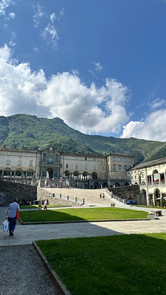







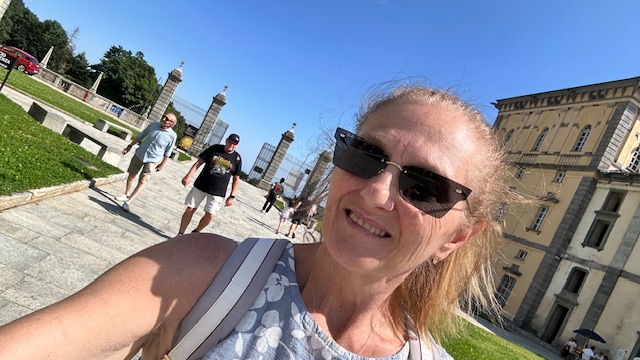








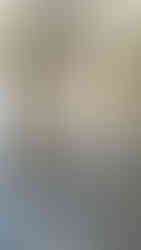











































































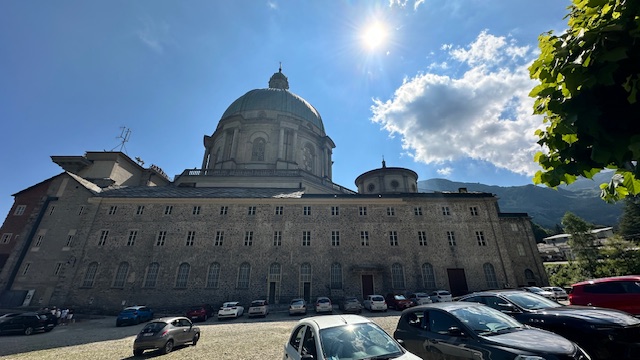
























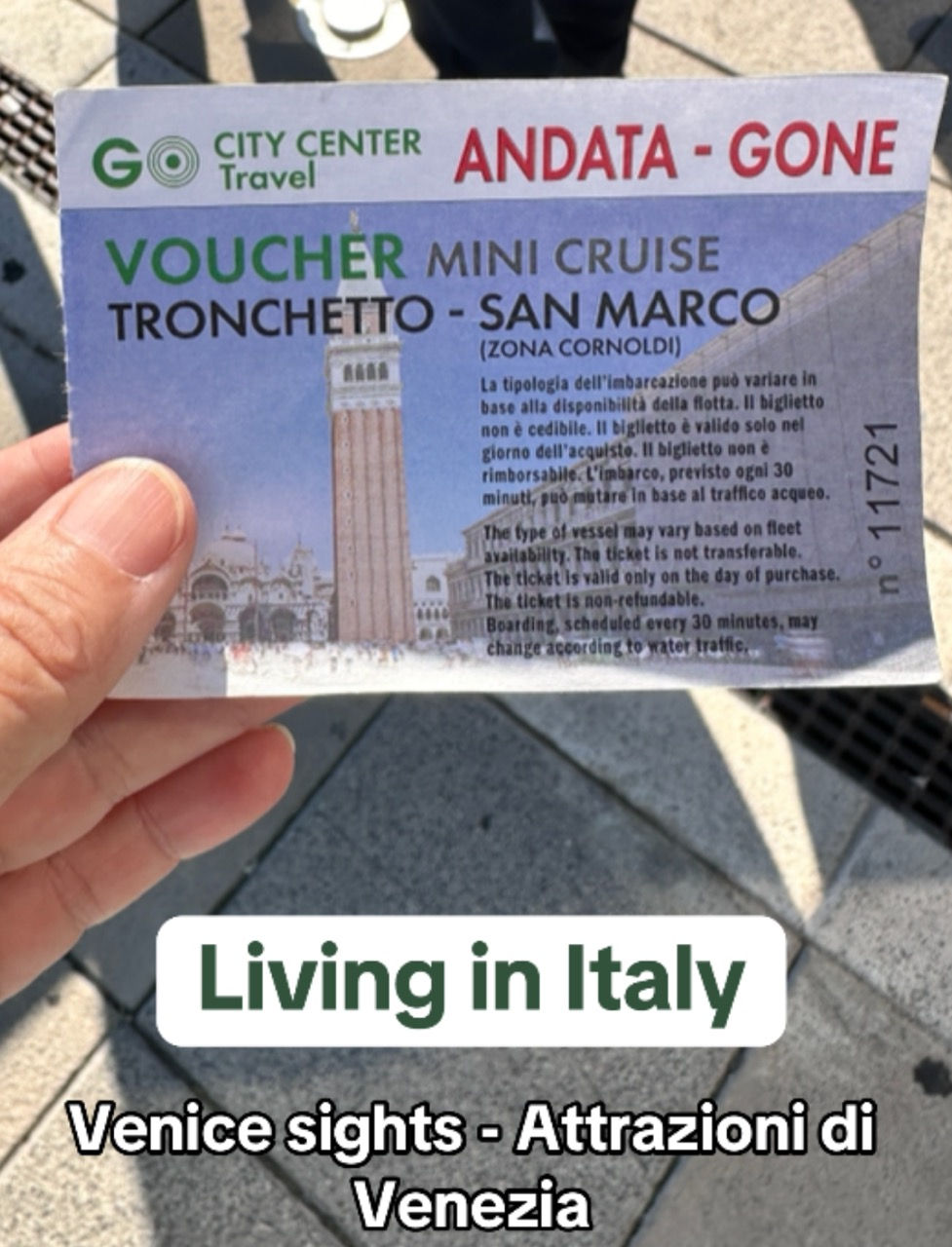


Comments